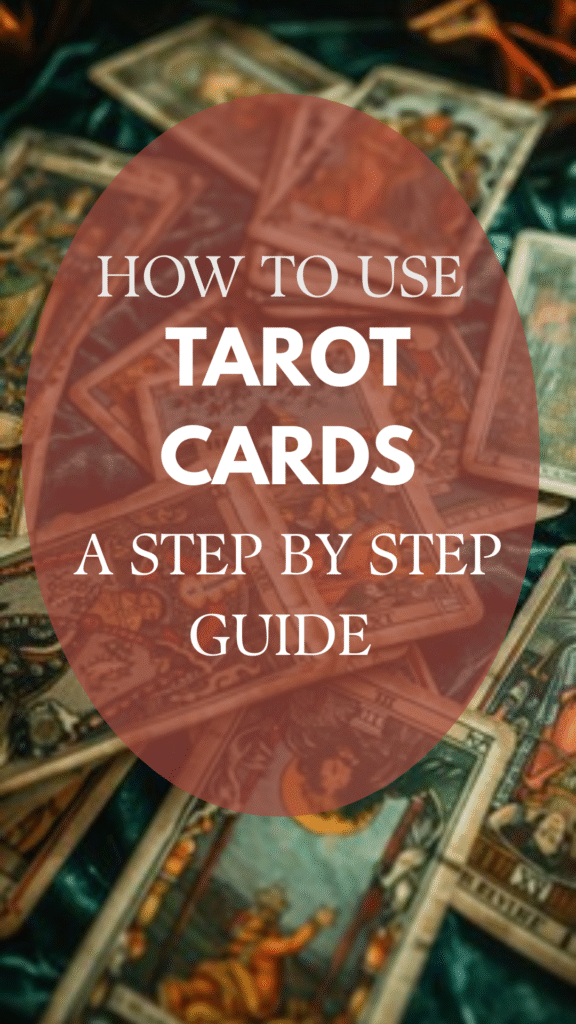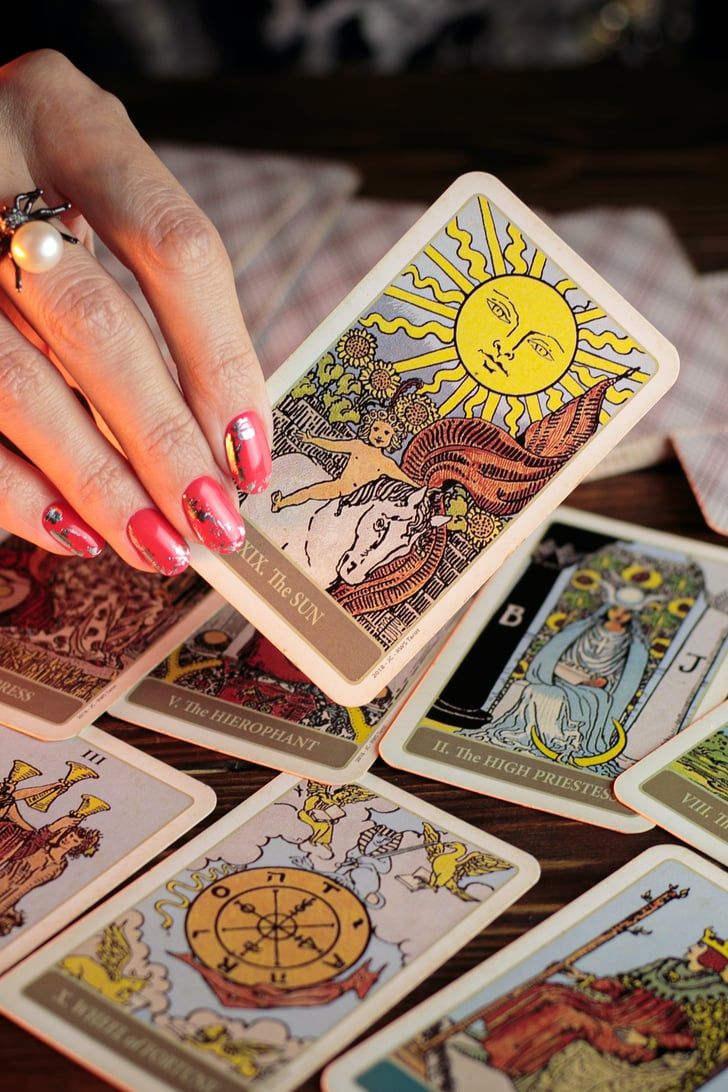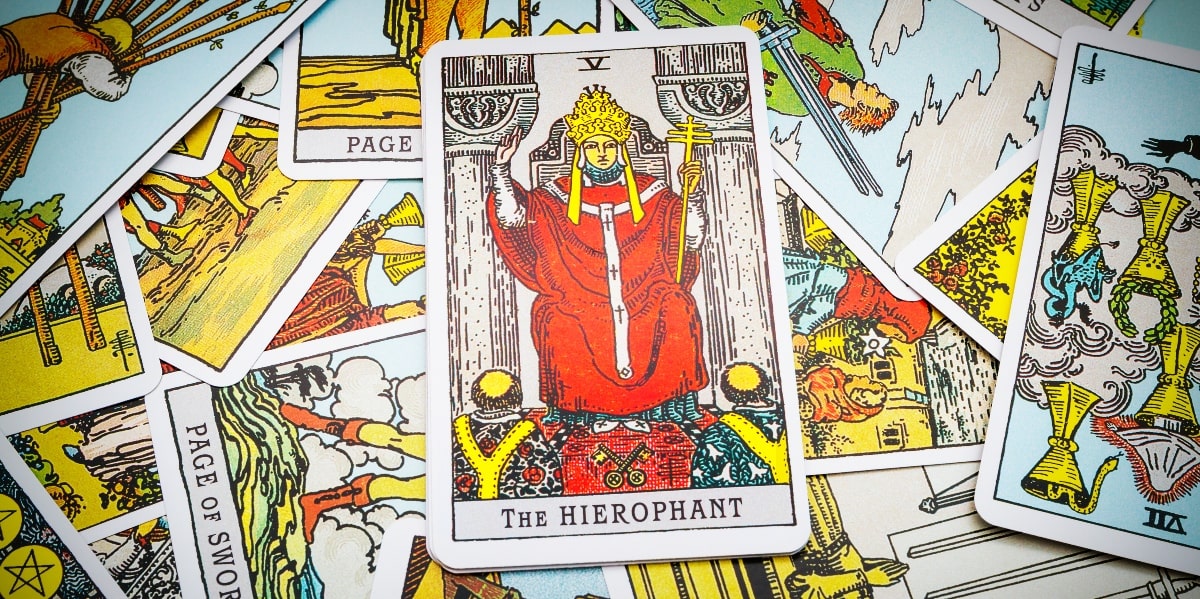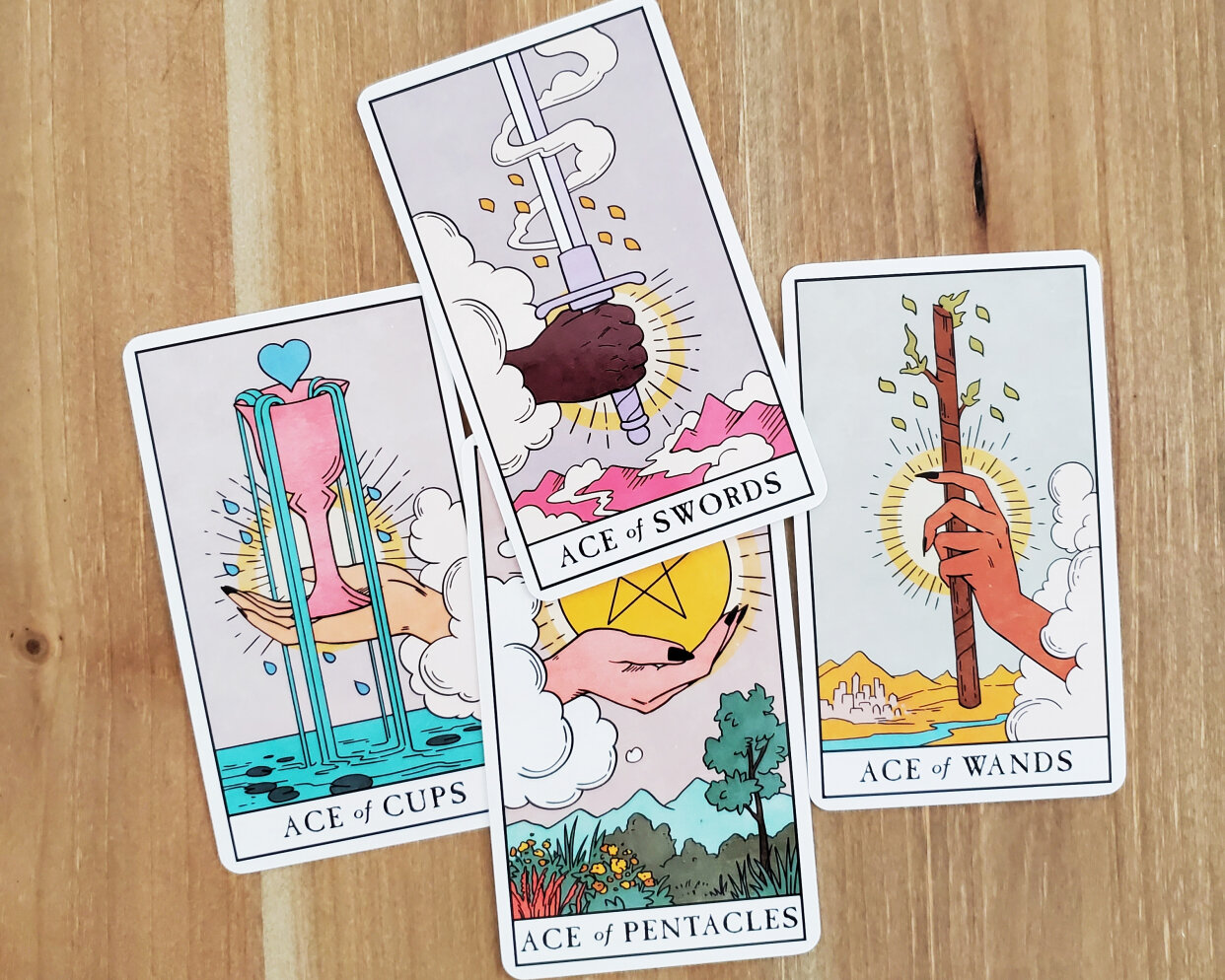
Discovering What Tarot Really Is
Tarot isn’t just about fortune-telling—it’s a powerful tool for inner growth, clarity, and self-awareness. Rather than offering fixed predictions, tarot cards guide you in navigating life’s twists and turns by illuminating what’s happening now. The insights help you reflect and respond more intentionally.
Tarot as a Reflection of Self
Think of a tarot deck like a mirror for the soul. It reflects your thoughts, emotions, and subconscious patterns. While it won’t make choices for you, tarot helps you see your path more clearly and align your actions with your deeper truth.
Unlocking Intuition Through Tarot
Tarot doesn’t just answer questions—it helps you ask the right ones. When used with intention and curiosity, it becomes a personal guide that leads you to clarity and intuitive wisdom.

What’s Inside a Tarot Deck?
A traditional tarot deck contains 78 cards, divided into two main categories:
- Major Arcana: 22 cards that focus on life’s core lessons and spiritual evolution.
- Minor Arcana: 56 cards that deal with everyday matters and practical insights.
Breaking Down the Deck
- Major Arcana: These cards capture pivotal themes and life-changing experiences. Think of them as significant scenes in the movie of your life.
- Minor Arcana: These are more about the day-to-day events and energies, organized into four suits—Wands, Cups, Swords, and Pentacles.
The Origins of Tarot
Tarot’s roots go back to 15th-century Italy, where the cards were originally created for gameplay. Over time, people discovered their deeper symbolic power and began using them for spiritual exploration. The three main tarot systems used today include:
- Tarot de Marseille
- Rider-Waite-Smith (great for learning)
- Thoth Tarot
The Rider-Waite-Smith deck is especially helpful for beginners because of its rich illustrations and accessible meanings.
Tarot Is About Possibility, Not Prediction
While many think tarot shows the future, that’s a myth. What it really does is reveal where your current energy is leading and offer ways to shift course if desired. You’re always in control.
Oracle Cards vs. Tarot Cards
Both are spiritual tools, but they differ:
- Tarot: Always follows a 78-card system with consistent structure.
- Oracle cards: More freeform, with varying themes and card counts.
Using both together can offer even more insight, blending structure with creative guidance.
Major Arcana: Your Life’s Turning Points
These 22 cards represent key stages in personal transformation—known as the Fool’s Journey. Highlights include:
- The Fool: Embarking on a fresh chapter
- The Magician: Creating your reality
- The High Priestess: Trusting your inner wisdom
- The Empress: Abundance and nurture
- The Emperor: Stability and control
- The Lovers: Important choices and relationships
- The Chariot: Focused forward movement
- Death: Endings that lead to growth
- The World: Reaching completion
These cards reflect universal experiences that shape our lives and evolution.
Minor Arcana: Life’s Daily Influences
The Minor Arcana brings the everyday into focus. It’s split into four suits that reflect different life areas:
- Wands (Fire): Drive, action, inspiration
- Cups (Water): Love, emotions, intuition
- Swords (Air): Thoughts, conflict, communication
- Pentacles (Earth): Finances, work, physical matters
Each suit contains ten numbered cards and four court cards (Page, Knight, Queen, King).
The Court Cards Explained
These cards often represent people, but they can also symbolize parts of yourself or energies to embody:
- Page: New beginnings and curiosity
- Knight: Momentum and pursuit
- Queen: Nurturing insight and understanding
- King: Leadership and confidence
Numerology in Tarot
Each number carries a theme that enhances card meanings:
- 1: Fresh starts and ideas
- 2: Cooperation and duality
- 3: Creativity and expansion
- 4: Order and foundation
- 5: Change and tension
- 6: Resolution and harmony
- 7: Knowledge and exploration
- 8: Ambition and movement
- 9: Insight and nearing fulfillment
- 10: Endings and new cycles
Pair these numbers with suits for deeper readings. For instance, the 4 of Wands might symbolize stability in a creative project.

How to Begin Reading Tarot Cards
Step 1 – Pick Your First Deck
Start with the Rider-Waite-Smith tarot deck. It’s beginner-friendly and richly symbolic, which helps with learning.
Step 2 – Create a Peaceful Space
Choose a calm area free from distractions. Add candles, calming scents, or soft music to set a relaxing tone for your reading.
Step 3 – Clarify Your Question
Focus your inquiry. Avoid vague or overly detailed questions. Instead, ask:
- What can I learn from this situation?
- What is the energy around my goals?
- How can I nurture my self-esteem?
Step 4 – Select a Spread
Begin with basic layouts:
- 1-card reading: Quick daily insight
- 3-card layout: Great for past-present-future or other triads
Step 5 – Shuffle With Intention
While mixing the cards, hold your question in your mind. When ready, draw your cards based on your gut feeling.
Step 6 – Read the Cards
Take in the visuals, the feelings they evoke, and the symbols. Blend what you see with what you sense. Use guides for support, but don’t rely on them too much—intuition is key.
Step 7 – Reflect in a Journal
Write about your readings to track your growth and gain clarity over time. Note your impressions and what the experience taught you.
Avoid These Newbie Mistakes
- Don’t pull cards repeatedly for the same issue
- Skip readings when you’re too emotional
- Don’t be afraid of difficult cards—they’re teachers
- Avoid rigid interpretations; let your intuition lead
Tarot is most powerful when you trust your instincts and remain open to self-exploration.

Final Thoughts: Tarot as a Personal Growth Tool
Tarot isn’t about seeing into the future—it’s about becoming more aware of the present. It encourages mindful choices, emotional intelligence, and spiritual insight.
Each card opens a window to deeper self-awareness. With patience and practice, tarot becomes a supportive companion in your life’s journey.
Start simply, stay open, and trust your path. Your tarot deck is ready when you are.
Frequently Asked Questions About Tarot
1. Do I need psychic abilities to read tarot cards?
No. Tarot reading is more about tapping into your intuition and being open to self-reflection than having supernatural powers. Anyone can learn with practice.
2. Can tarot cards really predict the future?
Tarot reveals possibilities based on current energies and choices. It’s more about guidance than hard predictions.
3. How often should I do a tarot reading?
Tarot reveals possibilities based on current energies and choices. It’s more about guidance than hard predictions.
4. What’s the best deck for a beginner?
The Rider-Waite-Smith tarot deck is highly recommended because of its straightforward imagery and wide availability of learning resources.
5. Can I read tarot for other people as a beginner?
Yes, but it’s best to start with yourself to build confidence. When reading for others, be clear that you’re still learning and focus on offering thoughtful reflections rather than firm answers.
